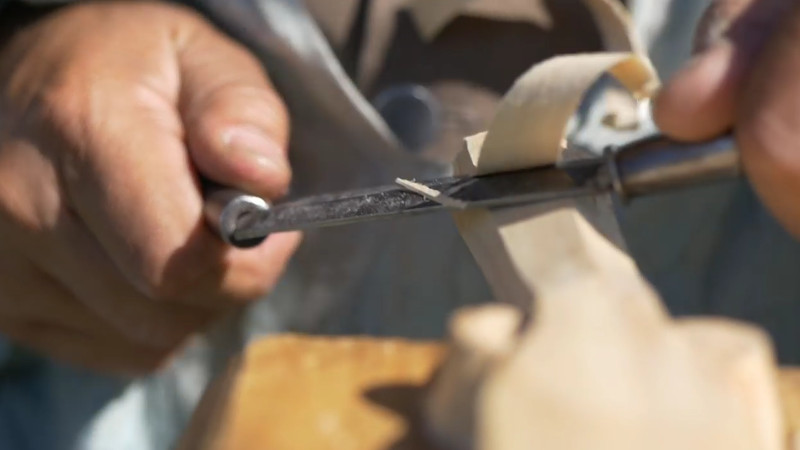Here at Hackaday we tend to stay pretty close to the bleeding edge in tech, not by any conscious effort, but simply because that’s what most hackers are interested in. Sure we see the occasional vintage computer rebuild, or reverse engineering of some component that was put into service before most of us were born; but on the whole you’re way more likely to see projects involving the latest and greatest microcontroller to hit AliExpress than ones involving the once ubiquitous vacuum tube.

But occasionally it’s nice to take a step back from the latest and greatest, to really look at what makes the hacker spirit without the all modern trappings of blinking LEDs and Wi-Fi connectivity. We make and explore because it’s something we are passionate about, and while today most of us are doing that with a soldering iron or a compiler, that hasn’t always been the case. In the video below, historic interpreter and woodworker [Bill Maddox] talks about what draws him to 18th century technology. His tools may look foreign to us, but the passion he shows while talking about his creations will be familiar to anyone who’s ever set foot in a hackerspace.
Even with a vastly different set of interests than the modern hacker, [Bill] runs into some very familiar problems. When the highly specialized tools he needed to work like an 18th century craftsman weren’t available, he decided to make his own. But to make his own tools he needed to learn how to forge, and after he forged his hand tools he moved on to forging chisels for the lathe he decided to build.
Whether or not we ever take a knife to a piece of wood and try to carve out a spoon, it’s impossible to watch [Bill] speak about his creations and not see him as a kindred spirit. Like many of us, he’s honed skills in a niche that the everyday person takes for granted. Makes you wonder what people from 300 years in the future would think of us if they could peer back through the centuries.
















I love how hackers like to see the craftsmanship of the entire world as a funny little echo of their own tinkerings.
Not sure what you’re trying to get at with this comment. The thrust of this post and the one Jenny did that it’s linked to is that hackers/makers shouldn’t consider themselves superior simply because the tech they work with is outwardly more complex or “impressive”.
Interesting video. I’d like to take a moment to say I really miss the ‘Hand Made’ experiment that Hackaday tried a few years back. Though Hackaday is primarily a technology blog, the content from Hand Made was high quality and interesting. I’ve learned lots from Hackaday over the years, mostly from the comment section, but I think if people are interested in the newest 3D printer technology, they would also be interested in “lost art” forms of fabrication. Bring back the Hand Made section, please. Think of it as a way to introduce old skills to people who peruse new technology. Fusing the old skills with new technology might even yield some interesting projects.
Also, for what it’s worth, when I was in Boy Scouts I made a 24″ bow saw similar to the tool seen at 1:05 in the video. Ya’ know, just for the fun of replicating a historical saw I had seen somewhere. Half of the adult leaders thought I’d developed a new type of saw frame!
“I’d like to take a moment to say I really miss the ‘Hand Made’ experiment that Hackaday tried a few years back.”
Wholeheartedly seconded!
Anyone else think of Roy Underhill and The Woodwright’s Shop?
Yes, right away! Loved that show.
I really dig the hat. Does anyone know where I can get one or how it’s made?
Looks like felt. Basically, you take a bunch of sheep wool, clean it, pound on it, and force it into the shape you want.
soapy water is involved at some point
and/or a felting needle.
For whatever it may be worth, this entire channel on YouTube is pure gold.
Jon Townsend inherited his father’s business, Jas. Townsend and Sons, which supplies recreations of eighteenth century supplies and clothing for reenactors and the film industry. The channel is primarily an exploration of the food and cooking techniques of North America during that period, and as such is *ALL HACKING* – the primary sources of that time are not terribly specific about things, and so much of any attempt at reenactment is through experimentation.
It’s really fascinating stuff, and I’ve been a fan of the channel for a long time.